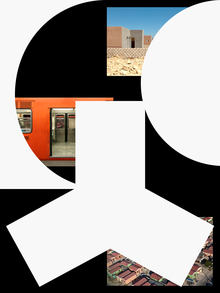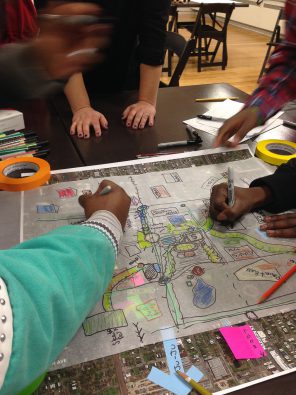Perspecta — “Toward New Possibility in the Public Realm, Together”
In this essay for the Yale School of Architecture’s Perspecta journal, Jeanne Gang and Alissa Anderson outline the stakes, approach, and potential of the Studio’s Polis Station proposal to reimagine police stations as community assets.
“A growing body of research demonstrates that the more we interact with people who are different from us, the more innovative and engaged we become, making better decisions and developing successful solutions to complex problems that fuel social and economic progress. Cities are key sites where diverse people come together and conceive these ideas that move the world forward. [1] So what might this mean for the United States, where our urban environments are trending toward fragmentation?
Economic segregation is increasing, with one-third of American families in major metropolitan areas now living in either high- or low-income neighborhoods—a division that is greater than double that of 1970. [2] Further, concentration of poverty is increasing, with the number of high-poverty urban neighborhoods having tripled, and the number of poor people living in them having doubled over that same forty-plus year period. [3]
Multiple overlapping forces are behind these trends; most notably, rising income inequality across the nation and public policies at various levels of government that make it difficult for lower-income families to move into middle and higher-income neighborhoods. [4] Combined, they are producing toxic conditions for individuals, families, and communities. Researchers are accumulating evidence about how the negative effects associated with poverty are amplified when a large fraction of a poor person’s neighbors are also poor—including worse mental and physical health, higher crime, and obstructed economic mobility. Further, as 75 percent of residents in high-poverty US neighborhoods are African American or Latino, these effects disproportionately burden the lives of people of color. [5]
Seeing this growing divide embedded in the shifting fabric of urban America, how can architects and designers proceed? Will we mirror it by sorting ourselves into architects of the rich and architects of the poor? To be sure, there are those who have adapted their practices to the typologies serving first-world luxury lifestyles, focusing their design energy on formal innovation, while others have centered their work on addressing social conditions by building for those in need of the basics. The dominant perception within the discipline is that the former is architecture with a capital “A,” whose creative success hinges on its formal qualities, while the latter’s contribution is socially beneficial but not held to the same creative standard, or sometimes not considered design at all. …
Today, as the challenges in many US urban cores and inner ring suburbs resonate with those of post-war reconstruction and the Great Depression, it is time for architects to explore how current social science and movements for social justice can inform a renewed design avant-garde propelled by public interest. Recognizing that rising income inequality and the concentration of poverty are intertwined crises that ultimately harm everyone, architects can—rather than mirroring society’s widening rifts—discover new possibilities for the discipline and beyond. …”
Citations
1. For a quick gloss on social diversity’s productive effects, see Katherine W. Phillips, “How Diversity Makes Us Smarter,” Scientific American, October 1, 2014, available online at https://www.scientificamerican.com/article/how-div…. For a more in-depth exploration of the role of cities, see Ed Glaeser’s Triumph of the City: How Our Greatest Invention Makes Us Richer, Smarter, Greener, Healthier, and Happier (New York: Penguin Books, 2012).
2. The proportion of American families in major metropolitan areas who live in either rich or poor neighborhoods (34 percent in 2012) is in fact now nearing that who live in middle-income neighborhoods (40 percent in 2012); in 1970 those percentages were 15 and 65, respectively. See Sean F. Reardon and Kendra Bischoff, The Continuing Increase in Income Segregation, 2007–2012 (Stanford Center for Education Policy Analysis, March 2016), 5, http://cepa.stanford.edu/content/continuing-increa….
3. High-poverty neighborhoods are those where 30 percent or more of the population live below the poverty line. See Joe Cortright and Dillon Mahmoudi, City Report: Lost in Place (City Observatory, Dec 2014), 2, http://cityobservatory.org/wp-content/uploads/2014….
4. These two causes are further discussed by Cortright and Mahmoudi in City Report: Lost in Place, 8-9, in which they provide examples of these public policies, including local land use restrictions and terms attached to federal housing assistance. Reardon and Bischoff’s report provides a specific measurement of inequality in the US: in 2014 the top 10% of earners accrued 50% of all income. This statistic is drawn from Thomas Piketty and Emmanuel Saez’s 2015 updated table and figures of their 2003 report “Income Inequality in the United States, 1913–1998,” http://eml.berkeley.edu/~saez/TabFig2014prel.xls.
5. Cortright and Mahmoudi, City Report: Lost in Place, 8.

